What is a balanced diet? It must contain Vitamins, Proteins, Carbohydrates, Minerals, Fiber and Fat (VPCMFF) in a correct proportion. It should have a diversity in VPCMFF components to promote good health. Eating healthy is above ease and health else its about disease and death. Lack of consumption of right food ingredients (nutrients from right sources) negatively impacts the metabolic function of the body (accumulates toxins within the body leading to chronic illness in the long run). With age, gender and body size, the consumption of right ingredients (sourced from right food sources) on a daily basis is a necessity to survive. One has to also make it interesting in life.
For adults, the daily caloric needs vary based on the level of physical activity undertaken. This ranges from 2400 to 3900 calories, with lighter activities requiring fewer calories and more strenuous work demanding higher intake. These caloric requirements are necessary to sustain bodily functions, energy levels, and overall health. In terms of essential nutrients, adults require an intake of approximately 50 grams of protein daily. Protein is essential for muscle maintenance, repair, and various physiological functions. Adequate protein intake is particularly important for those engaged in physical labor or exercise. Iron is another vital nutrient, with a recommended daily intake of around 20 milligrams. Iron plays a critical role in oxygen transport within the blood and overall cellular function. Including iron-rich foods in the diet, such as lean meats, legumes, and fortified cereals, helps meet this requirement. Calcium, essential for bone health and various bodily processes, is needed at a daily intake of around 0.5 grams. Dairy products, leafy greens, and fortified foods are good sources of calcium. A balanced diet incorporates a variety of food groups to ensure optimal nutrition. This includes:
Green Leaf Vegetables (240 grams): Rich in vitamins, minerals, and fiber, these vegetables provide essential nutrients for overall health. Leafy vegetables are highly nutritious and beneficial for your health due to their vitamins, minerals, and fiber content. Including a variety of leafy greens in your diet can contribute to overall well-being. As a general guideline, aiming to consume around 2 to 3 cups of leafy greens per day is recommended.
Sugar (30 grams): While moderation is key, small amounts of sugar can provide quick energy. Natural sources like fruits are preferable. There is no strict limit for natural sugars found in whole foods like fruits, vegetables, and dairy products, as they come packaged with beneficial nutrients like fiber, vitamins, and minerals. These natural sources of sugar are generally considered healthy and safe to consume as part of a balanced diet. However, it’s still important to be mindful of your overall carbohydrate intake, including natural sugars, especially if you have specific dietary goals or health conditions such as diabetes. Listening to your body’s hunger and fullness cues and choosing a variety of nutrient-dense foods will naturally guide you in managing your sugar intake.
Milk & Curd (120 ml): A source of calcium, vitamin D, and protein, milk supports bone health and overall nutrition. For adults, consuming around 2 to 3 servings of dairy products per day is often recommended. A serving of milk is typically considered to be 1 cup (240 ml). This can vary based on factors such as age, activity level, and overall calorie needs. It’s important to choose low-fat or non-fat milk options to reduce saturated fat intake. Curd or yogurt is a nutritious dairy product that provides probiotics (beneficial bacteria), protein, and calcium. Including yogurt in your diet can be beneficial. A typical serving of yogurt is around 1 cup (240 ml). Choose plain, unsweetened yogurt to avoid added sugars. Keeping both the consumption within 120 ml is perhaps staying moderately controlled on its requirement.
Non-Leaf Vegetables (150 grams): Including a mix of colorful vegetables provides an array of essential vitamins, minerals, fiber and antioxidants that contribute to overall health and well-being. These vegetables come in a wide range of colors, each offering unique nutrients and health benefits. The recommended daily intake of non-leafy vegetables can vary based on dietary guidelines and individual needs. However, a general guideline is to aim for at least 2 to 3 servings of non-leafy vegetables per day. A serving size is typically considered to be about 1/2 to 1 cup of cooked vegetables or 1 cup of raw vegetables. Staying within a limit of 150 grams on an average, will keep the diet balanced.
Fat and Oil (Total Fat 40-50 grams): Healthy fats, such as those found in nuts, seeds, and olive oil, are important for various bodily functions. Dietary fat is an important macronutrient that provides energy, supports cell function, and helps the body absorb certain vitamins. However, it’s also essential to consume fats in moderation and choose healthy sources. The American Heart Association (AHA) recommends that for a 2,000-calorie daily diet, most adults should aim for: Total Fat: 25-35% of total daily calories, which translates to about 44 to 77 grams of fat per day. Saturated Fat: Less than 6% of total daily calories, which is around 13 grams per day. Trans Fat: As minimal as possible, ideally avoiding altogether. It’s important to focus on the quality of fats. Healthy fats, such as monounsaturated fats (found in olive oil, avocados, and nuts) and polyunsaturated fats (found in fatty fish, flaxseeds, and walnuts), have positive effects on heart health and overall well-being. These fats can be a part of a balanced diet. Limiting saturated and trans fats is crucial for heart health. These fats are often found in processed and fried foods, baked goods, and some animal products. Instead, choose lean protein sources and incorporate healthy fats into your diet in moderation.
Rice (270 grams) and Millet (90 grams): Carbohydrates from whole grains like rice and millet provide sustained energy for daily activities. The appropriate amount of rice to consume in a day depends on various factors, including your overall dietary goals, energy expenditure, and individual nutritional needs. In a balanced diet, carbohydrates from sources like rice provide energy and nutrients, but portion control is essential to maintain a healthy intake. As a general guideline, a typical serving of cooked rice is about 1/2 to 1 cup, which contains approximately 15-30 grams of carbohydrates. For most individuals, consuming 1 to 2 servings of rice per meal is considered reasonable. However, it’s important to balance your rice consumption with other nutrient-rich foods like vegetables, lean proteins, and healthy fats. If you’re looking to manage your carbohydrate intake or control blood sugar levels, you might consider opting for whole grains like brown rice, quinoa, or other alternatives that offer more fiber and nutrients.
Pulses (90 grams): Legumes like lentils and beans are excellent sources of plant-based protein and fiber. The recommended daily intake of pulses (legumes) can vary based on dietary guidelines and individual needs. Generally, consuming around 1/2 to 1 cup (cooked) of pulses per day is considered a healthy amount. This amount provides a good balance of protein, fiber, vitamins, and minerals without going overboard on calories. Pulses are nutrient-dense foods that offer numerous health benefits, including being excellent sources of plant-based protein, dietary fiber, and various vitamins and minerals. They are also typically low in fat and have a low glycemic index, which means they can help manage blood sugar levels. Incorporating a variety of pulses into your diet, such as lentils, chickpeas, black beans, and peas, can provide a well-rounded nutrient profile. Just remember to cook them thoroughly, as this helps improve their digestibility and nutrient absorption.
Balancing these components in the diet helps ensure a well-rounded intake of essential nutrients, promoting overall health, energy levels, and the body’s ability to undertake different levels of physical activity.
VITAMINS
Vitamins are organic compounds that are essential for various physiological functions in the human body. They are micronutrients, which means they are required in relatively small amounts compared to macronutrients like carbohydrates, proteins, and fats. Vitamins play crucial roles in maintaining overall health and well-being. Vitamin are substances that are found in foods we eat and we need them for growth and development of the body. Each of these vitamins have specific role to play. There are two kinds of vitamins – fat soluble and water soluble. Fat soluble are stored in fat tissues in our body and liver and are dispensed from there whenever the body needs them. They can be stored for few days and some for few months. Special carriers in the body take them to wherever the body needs them. Vitamin K, E, D and A (KEDA) are all fat soluble vitamins. Water soluble vitamins do not get stored in the body as much and they instead travel through the bloodstream when we eat foods that have a water soluble vitamins and whatever body can not use, comes out in the urine.
Each vitamin has specific functions and plays a unique role in the body. A balanced diet that includes a variety of foods typically provides the necessary vitamins for good health. In some cases, dietary supplements may be recommended by healthcare professionals to address specific vitamin deficiencies or health conditions.
Vitamins are essential organic compounds that our bodies need in small amounts to function properly. They play crucial roles in various physiological processes, including metabolism, immune system function, and maintaining healthy skin, bones, and tissues. There are two main categories of vitamins: water-soluble and fat-soluble.
Water-soluble vitamins (such as vitamin C and the B-complex vitamins) dissolve in water and are not stored in the body for long periods. This means they need to be consumed regularly through diet to maintain optimal levels. Fat-soluble vitamins (such as vitamins A, D, E, and K) are stored in fatty tissues and the liver, and they can accumulate over time. It’s important not to consume excessive amounts of fat-soluble vitamins, as they can lead to toxicity.
Each vitamin has specific functions and benefits. For instance, vitamin C is known for its antioxidant properties and role in collagen production, while vitamin D is essential for calcium absorption and bone health. A balanced and varied diet rich in fruits, vegetables, whole grains, lean proteins, and dairy products typically provides the necessary vitamins for good health. In some cases, dietary supplements may be recommended to address specific deficiencies, but it’s always best to consult a healthcare professional before starting any supplementation.
There are two main categories of vitamins:
VITAMINS – Fat Soluble (A,D,E,K)
Fat-Soluble Vitamins: These vitamins are soluble in fat and are stored in the body’s fatty tissues and liver. The fat-soluble vitamins include:
Vitamin K: Necessary for blood clotting and bone health.
Vitamin E: Acts as an antioxidant, protecting cells from damage.
Vitamin D: Essential for calcium absorption and bone health.
Vitamin A: Important for vision, immune function, and skin health.
VITAMIN A- Fat Soluble (A)
Vitamin A is a fat-soluble vitamin that is crucial for maintaining various aspects of health in the human body. It plays several vital roles, including:
Vision: Vitamin A is essential for good vision, especially in low-light conditions. It is a key component of rhodopsin, a pigment in the retina that allows us to see in dim light. Severe vitamin A deficiency can lead to night blindness and, in extreme cases, total blindness.
Immune System: Vitamin A supports the immune system by helping maintain the health of the skin and mucous membranes, which act as barriers against infections. It also plays a role in the production and function of white blood cells that help fight infections.
Skin Health: Vitamin A is important for maintaining healthy skin. It is often used in skincare products for its potential to reduce wrinkles and improve skin texture. Retinoids, which are derived from vitamin A, are commonly used to treat various skin conditions.
Reproduction and Growth: Vitamin A is necessary for normal reproduction and development. It is crucial during pregnancy for fetal development, including the development of the eyes, heart, lungs, and other organs.
Antioxidant Activity: Some forms of vitamin A, such as beta-carotene, have antioxidant properties. Antioxidants help protect cells from damage caused by harmful molecules called free radicals.
There are two main sources of vitamin A:
Preformed Vitamin A: This type of vitamin A is found in animal-based foods and is in a form that is readily used by the body. Examples include liver, fish, dairy products, and eggs.
Provitamin A Carotenoids: These are plant-based compounds that can be converted into vitamin A by the body. The most well-known provitamin A carotenoid is beta-carotene, found in orange and dark green leafy vegetables, carrots, sweet potatoes, and other colorful fruits and vegetables.
It’s important to note that while vitamin A is essential for health, excessive intake of preformed vitamin A (usually from supplements) can be toxic and lead to a condition called hypervitaminosis A. This can cause a range of symptoms and health problems. The recommended daily intake of vitamin A varies by age, sex, and life stage, and it’s typically expressed in micrograms (mcg) of retinol activity equivalents (RAE). Meeting daily vitamin A requirements through a balanced diet is usually sufficient to maintain health. However, if you suspect a deficiency or have specific health concerns, it’s advisable to consult a healthcare professional for guidance.
Vitamin A: Important for vision, immune function, and skin health. Vitamin A – Helps us see at night. Needed to improve your eyesight (right vision). Right visions means seeing colors from brightest to darkest. In addition to that this is also about healthy or right skin.
Sources of Vitamin A : Maize, Butter, Egg, Papaya, Milk, Cod Liver Oil, Carrot, Cabbage, Mango.
Here are the top five food sources that are rich in vitamin A. These sources can help you meet your daily vitamin A requirements naturally. Remember that a balanced diet with a variety of foods is essential for overall health, and it ensures you get a range of essential nutrients, including vitamin A.
Liver: Beef liver, in particular, is incredibly high in vitamin A. Just a small amount of liver provides several times the daily recommended intake of vitamin A.
Sweet Potatoes: Sweet potatoes are a great plant-based source of beta-carotene, which the body can convert into vitamin A. They are also rich in fiber and other essential nutrients.
Carrots: Carrots are another excellent source of beta-carotene. They are a popular and convenient way to increase your vitamin A intake.
Spinach: Dark, leafy greens like spinach are rich in vitamin A. They also contain a host of other vitamins and minerals that are good for your health.
Pumpkin: Like sweet potatoes and carrots, pumpkin is a rich source of beta-carotene. It’s a versatile ingredient that can be used in various dishes.

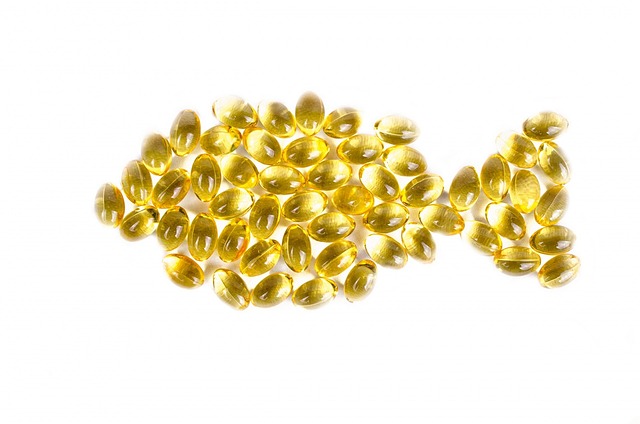
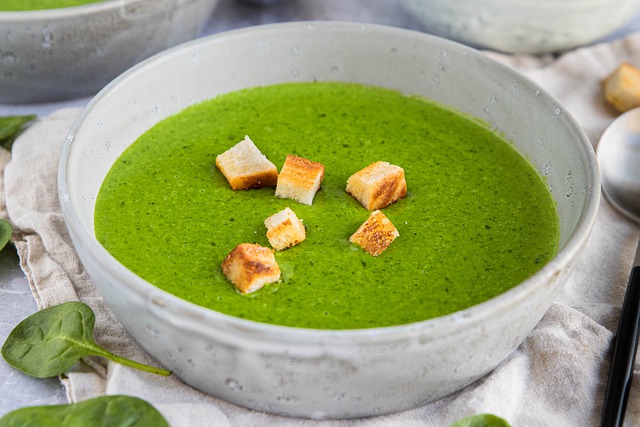
The recommended dietary allowance (RDA) or adequate intake (AI) of vitamin A varies by age, sex, and life stage. It is typically measured in micrograms (mcg) of retinol activity equivalents (RAE). The following are general guidelines for vitamin A intake:
Infants (up to 6 months): About 400 mcg RAE per day
Infants (7 to 12 months): About 500 mcg RAE per day
Children (1 to 3 years): About 300 mcg RAE per day
Children (4 to 8 years): About 400 mcg RAE per day
Children and Adolescents (9 to 13 years): About 600 mcg RAE per day
Adolescents and Adults (14 years and older):
Males: About 900 mcg RAE per day
Females: About 700 mcg RAE per day
Pregnant females: About 770 to 1,300 mcg RAE per day, depending on the stage of pregnancy
Breastfeeding females: About 1,200 to 1,300 mcg RAE per day, depending on age
These recommendations are based on the dietary reference intake (DRI) values established by health authorities, such as the Institute of Medicine in the United States. Keep in mind that individual vitamin A requirements can vary based on factors like genetics, health status, and specific dietary choices. It’s important to obtain vitamin A from a balanced diet that includes a variety of foods rather than relying solely on supplements. In many cases, a well-balanced diet can provide all the vitamin A needed for good health. Major dietary sources of vitamin A include liver, fish, dairy products, eggs, and colorful fruits and vegetables, especially those rich in beta-carotene. Excessive vitamin A intake from supplements or high-dose medications can be toxic and lead to a condition called hypervitaminosis A, which can have serious health consequences. Therefore, it’s essential to follow recommended dietary guidelines and consult with a healthcare professional if you have concerns about your vitamin A intake or if you’re considering taking vitamin A supplements. They can provide personalized guidance based on your specific health needs.
The recommended daily intake of vitamin A for males is about 900 micrograms of retinol activity equivalents (mcg RAE) per day. To achieve this intake, you can include a variety of dietary sources in your daily meals. Here are some common food sources of vitamin A and their approximate vitamin A content:
Liver: Liver is one of the richest sources of vitamin A. Just a 3-ounce (85-gram) serving of cooked beef liver contains about 6,582 mcg RAE.
Fish: Certain fish are good sources of vitamin A. For example, a 3-ounce (85-gram) serving of cooked salmon provides about 59 mcg RAE.
Dairy Products: Dairy products like milk and cheese contain vitamin A. One cup (240 ml) of whole milk contains approximately 112 mcg RAE.
Eggs: A large egg contains about 82 mcg RAE of vitamin A.
Fruits and Vegetables: Many colorful fruits and vegetables are high in beta-carotene, a precursor to vitamin A. Examples include sweet potatoes, carrots, spinach, kale, and butternut squash. Consuming a variety of these foods daily can contribute to your vitamin A intake. For instance, a half-cup (118 ml) of cooked sweet potatoes contains approximately 961 mcg RAE.
Fortified Foods: Some foods are fortified with vitamin A to enhance their nutritional value. Check product labels for information on vitamin A content.
Keep in mind that these values can vary based on factors such as food preparation methods and serving sizes. Eating a balanced diet that includes a variety of these vitamin A-rich foods can help you meet your daily vitamin A needs without relying on supplements. It’s also essential to consider your individual dietary preferences and any dietary restrictions you may have. If you have specific dietary concerns or conditions that affect your nutrient absorption, it’s a good idea to consult with a healthcare professional or registered dietitian who can provide personalized dietary guidance tailored to your needs.
I like Minestrone soup. If we can add carrot, sweet potato and spinach as its ingredient, this soup can be a good source for Vitamin A. I think I would love to explore the idea of having various healthy soup recipes that can serve like a Vitamin bowl by itself. Soups designed with specific purpose of feeding in a diet like all vitamins or specific vitamins etc., is a great way to adopt a recipe in your daily diet plan and then just forget about the worries of necessary consumption. I also like Rasam in particular. No South Indian meal is complete without Rasam. Also known as Saaru & Chaaru in Kannada & Telugu languages, it’s a simple appetizer recipe that increases your hunger. ‘Rasam is the king of soups’. It won’t be wrong to say that soups are the modern version of rasam. Rasam is so delicious that one cannot stop themselves from having it over and over again and the best part is there are no side effects at all. Rasam can be called a “powerhouse of nutrients” as it is not only just rich in one particular vitamin but has multiple healthy nutrients like thiamin, folic acid, vitamin A, vitamin C, potassium, iron, magnesium, zinc, etc.
VITAMIN D – Fat Soluble (D)
Vitamin D: Essential for calcium absorption and bone health. Vitamin D keeps our bone healthy. Vitamin D is a fat-soluble vitamin that plays a crucial role in various physiological processes in the body. It is often referred to as the “sunshine vitamin” because the skin can synthesize it when exposed to sunlight. The recommended dietary allowance (RDA) for vitamin D can vary depending on factors such as age, sex, life stage, and individual health conditions. However, here are general guidelines for vitamin D intake to maintain normal levels in the body:
Infants: Infants from birth to 12 months typically require about 400-600 international units (IU) of vitamin D per day. Breastfed infants may need vitamin D supplements because breast milk alone may not provide an adequate amount.
Children and Adolescents: Children and teenagers aged 1 to 18 years generally need around 600-1,000 IU of vitamin D per day. This can come from a combination of sunlight exposure, dietary sources, and supplements if necessary.
Adults: Adults up to the age of 70 typically require about 600-800 IU of vitamin D daily. Adults over 70 may need slightly more, around 800-1,000 IU per day.
Pregnant and Lactating Women: Pregnant and breastfeeding women should aim for about 600-800 IU of vitamin D daily. Adequate vitamin D is important during pregnancy for both the mother and the developing fetus.
It’s important to note that these recommendations are general guidelines, and individual needs can vary. Additionally, some people may require higher doses of vitamin D, especially if they have limited sun exposure, darker skin, certain medical conditions, or malabsorption issues. The best way to determine your specific vitamin D needs and maintain normal vitamin D levels is to consult with a healthcare provider. They can assess your individual circumstances, recommend appropriate supplementation if necessary, and monitor your vitamin D status through blood tests. Vitamin D levels in the blood are often measured as ng/mL (nanograms per milliliter), and a normal range is typically considered to be between 30 and 50 ng/mL, although this can vary by laboratory and region.
Meeting your daily vitamin D needs through dietary sources alone can be challenging, as there are limited food sources of vitamin D. Therefore, it’s common for many adults to rely on a combination of dietary sources and sunlight exposure, with supplements if necessary, to achieve their recommended daily intake. Here are some common dietary sources of vitamin D and approximate amounts of vitamin D they provide:
Fatty Fish: Fatty fish like salmon, mackerel, trout, and sardines are some of the best natural sources of vitamin D. A 3.5-ounce (100-gram) serving of cooked salmon can provide around 570-590 IU of vitamin D.
Cod Liver Oil: Cod liver oil is a very concentrated source of vitamin D. One tablespoon of cod liver oil can provide more than 1,300 IU of vitamin D.
Mushrooms: Some types of mushrooms, such as shiitake and maitake mushrooms, can provide small amounts of vitamin D when exposed to ultraviolet (UV) light. However, the amounts are relatively low.
Fortified Foods: Many foods are fortified with vitamin D, including dairy products, plant-based milk alternatives, breakfast cereals, and orange juice. The amount of vitamin D in fortified foods can vary widely, so it’s important to check the nutrition labels.
Egg Yolks: Egg yolks contain vitamin D, with one large egg yolk providing about 41 IU of vitamin D.
Supplements: If you have difficulty obtaining enough vitamin D from dietary sources and sunlight, your healthcare provider may recommend a vitamin D supplement. These supplements come in various doses, such as 400 IU, 800 IU, or 1,000 IU per tablet or capsule. The appropriate dose will depend on your individual needs. For adults up to the age of 70 aiming for 600-800 IU of vitamin D daily, it’s a good idea to incorporate a combination of the sources mentioned above. Keep in mind that getting some of your vitamin D from sunlight is also important. However, the ability to synthesize vitamin D from sunlight can vary depending on factors like your location, skin type, and the time of year. Always consult with your healthcare provider to determine the right approach for meeting your specific vitamin D needs, especially if you have any underlying health conditions or concerns. They can recommend the most suitable sources and, if necessary, supplements to help you maintain optimal vitamin D levels.
Sources of Vitamin D:
The top 5 sources of vitamin D, which provide some of the highest levels of this essential nutrient, include:
Fatty Fish: Salmon: Salmon is one of the best natural sources of vitamin D. A 3.5-ounce (100-gram) serving of cooked salmon can provide up to 570-600 IU of vitamin D. Mackerel: Mackerel is another fatty fish rich in vitamin D, with approximately 360-450 IU per 3.5-ounce serving. Tuna: Canned tuna is a convenient source of vitamin D, with about 235-275 IU per 3.5-ounce serving.
Cod Liver Oil: Cod liver oil is a potent source of vitamin D, providing up to 450-1,360 IU per teaspoon. It’s one of the highest dietary sources available.
Fortified Foods: Many foods are fortified with vitamin D, including fortified milk, orange juice, and breakfast cereals. Depending on the product, a single serving can provide between 100-130 IU of vitamin D or more.
Egg Yolks: Egg yolks contain small amounts of vitamin D. One large egg yolk typically contains around 40 IU of vitamin D.
UV-Exposed Mushrooms: Some types of mushrooms, particularly those exposed to ultraviolet (UV) light during growth, can provide vitamin D. The exact amount can vary but is typically in the range of 100-1,000 IU per 3.5-ounce serving.
It’s important to note that vitamin D requirements can vary from person to person, and factors such as age, skin type, geographic location, and sun exposure play a role in how much vitamin D your body produces naturally. If you have concerns about your vitamin D levels, it’s a good idea to consult with a healthcare professional for guidance on dietary sources and supplementation if needed.
Sources of Vitamin D: Best: Sunlight, Better: Fish, Being: Butter, Pulses, Milk, Egg
Sunlight: The primary natural source of vitamin D is sunlight. When your skin is exposed to UVB (ultraviolet B) rays from sunlight, it can produce vitamin D. The amount of sunlight needed depends on factors like skin tone, geographic location, and time of day. Generally, spending 15-30 minutes in the sun a few times a week can provide an adequate amount of vitamin D for most people. our skin can produce vitamin D when exposed to sunlight. Spending some time outdoors in the sun can help your body synthesize vitamin D naturally. However, the amount of exposure required can vary depending on factors like skin type, geographical location, and time of day. The best time for people in India, including Bangalore, to get sunlight for vitamin D synthesis is generally during the morning hours. This is because sunlight contains ultraviolet B (UVB) rays, which are responsible for stimulating the production of vitamin D in the skin. The following factors contribute to the morning being an optimal time:
UVB Intensity: UVB radiation from the sun is highest when the sun is at a certain angle in the sky. In most regions, this occurs in the late morning and early afternoon. During this time, the UVB rays can penetrate the Earth’s atmosphere more effectively and trigger vitamin D synthesis. Keep in mind that the ideal time for vitamin D synthesis is typically within a few hours after sunrise, as this is when the sun’s UVB rays are more abundant and effective for triggering the process. However, the exact duration of effective UVB exposure needed for vitamin D synthesis can vary based on factors such as skin type, latitude, and time of year. It’s generally recommended to aim for about 10-30 minutes of sunlight exposure to your face, arms, and legs during this time, a few times a week, to help meet your vitamin D needs. For accurate and location-specific information, consider using online tools or apps that provide sunrise and sunset times for your area, or refer to local weather reports or astronomical data.
Skin Safety: Exposing your skin to sunlight during the early morning is generally safer than during the peak hours of the day when the sun’s UV rays can be stronger and potentially harmful. It reduces the risk of sunburn and skin damage.
Duration of Exposure: You don’t need extended periods of sun exposure to meet your daily vitamin D needs. Just 10-30 minutes of sunlight exposure to your face, arms, and legs a few times a week can be sufficient for many people. The exact duration can vary based on factors like skin type, latitude, and the time of year.
Heat: Morning sunlight is typically more comfortable due to lower temperatures. It’s easier to spend time outdoors without feeling overheated.
It’s important to note that the specific times for optimal vitamin D synthesis can vary based on your location within India and the time of year. Bangalore, being in the southern part of India, generally has a more favorable climate for year-round sun exposure compared to northern regions. However, even in Bangalore, UVB intensity can be higher during certain months. To determine the best time for sun exposure in your specific location and time of year, you can use online tools or smartphone apps that provide information about UV index and sunlight intensity. Additionally, remember to take precautions to protect your skin from excessive sun exposure, such as wearing sunscreen, sunglasses, and protective clothing, especially if you plan to be in the sun for an extended period. Consulting with a healthcare provider can help determine the ideal sunlight exposure time for your individual needs.
Diet: Vitamin D can also be obtained through dietary sources. Common food sources include fatty fish (such as salmon, mackerel, and tuna), fortified dairy products (like milk and yogurt), fortified orange juice, fortified cereals, and egg yolks. It can be challenging to get enough vitamin D from diet alone, especially for those with limited sun exposure. For instance, since the vitamin D in an egg comes from its yolk, it’s important to use the whole egg—not just the whites. One yolk will give you about 40 IUs, but don’t try to get your daily vitamin D just from eggs. One egg contains about 200 milligrams of cholesterol. Pulses, such as lentils, chickpeas, and beans, are not typically known for being significant sources of vitamin D. Vitamin D is primarily obtained through exposure to sunlight and dietary sources like fatty fish (e.g., salmon, mackerel, and trout), fortified dairy products (e.g., milk and yogurt), and fortified breakfast cereals. That said, some foods that are occasionally categorized as pulses, like soybeans, do contain small amounts of vitamin D. However, the vitamin D content in these foods is not particularly high compared to other dietary sources. The best way to obtain sufficient vitamin D is through sunlight exposure and incorporating vitamin D-rich foods into your diet, as mentioned earlier.
If you like curd (yogurt), the not so good news that, it is not a significant natural source of vitamin D. While yogurt is a healthy dairy product that offers various nutritional benefits, its vitamin D content is minimal. The primary sources of vitamin D in the diet are typically fatty fish (like salmon and mackerel), fortified dairy products (such as milk and some yogurts), and fortified breakfast cereals. Similarly, Butter is not considered a significant source of vitamin D. While it contains small amounts of fat-soluble vitamins, including vitamin D, the levels are generally quite low.



Functions of Vitamin D:
Vitamin D is essential for several important functions in the body, including:
Calcium Absorption: One of its primary roles is to enhance the absorption of calcium from the small intestine. This helps maintain optimal calcium levels in the bloodstream, which is crucial for strong bones and teeth.
Bone Health: Vitamin D plays a key role in bone health. It promotes the mineralization of bones and helps prevent conditions like rickets in children and osteomalacia in adults. Insufficient vitamin D can lead to weak, brittle bones.
Immune System Support: It has been linked to the proper functioning of the immune system, helping the body defend against infections and diseases.
Cell Growth and Regulation: Vitamin D is involved in regulating cell growth and differentiation, which is important for overall health.
Anti-Inflammatory Effects: Some studies suggest that vitamin D may have anti-inflammatory properties, potentially reducing the risk of chronic inflammatory conditions.
Deficiency and Health Implications:
Vitamin D deficiency is relatively common, especially in regions with limited sunlight exposure. A deficiency can lead to health problems, including:
Osteoporosis: Weak, brittle bones.
Rickets: A condition characterized by weakened, deformed bones in children.
Increased Infection Risk: Weakened immune system function.
Mood Disorders: Some studies have suggested a link between vitamin D deficiency and mood disorders like depression.
Muscle Weakness: Reduced muscle strength and function.
Supplementation: In cases of deficiency or when dietary sources and sunlight exposure are inadequate, vitamin D supplements may be recommended by healthcare professionals. These supplements are available in various forms, such as vitamin D2 (ergocalciferol) and vitamin D3 (cholecalciferol). It’s important to note that excessive vitamin D intake can lead to toxicity, so it’s essential to follow recommended dietary guidelines and consult a healthcare provider if you have concerns about your vitamin D levels. Vitamin D needs can vary from person to person, so personalized advice may be necessary.
References : 1 ,
VITAMIN E – Fat Soluble (E)
Vitamin E is a fat-soluble vitamin that plays several important roles in the body. It acts as an antioxidant, protecting cells from damage. Body tissues need to be maintained and protected. These tissues are in our eyes, skins, liver, lungs etc. Lungs consistently inhale air which could polluted and needs protection (prevention from being damaged). It also helps in RBD production.
Why it’s Needed: Antioxidant Protection: Vitamin E is primarily known for its role as an antioxidant. It helps protect cells from damage caused by free radicals, which are unstable molecules that can harm cells, tissues, and DNA. Immune Support: Vitamin E also plays a role in supporting the immune system’s function. Skin Health: It is believed to contribute to healthy skin and eyes. Cardiovascular Health: Some studies suggest that Vitamin E may support cardiovascular health.
Sources: Vitamin E is naturally present in various foods and is also available as a dietary supplement. Nuts, Green Vegetables, Egg, Milk, Sunflower seeds and Oil, Beans. Milk and eggs do contain small amounts of Vitamin E, but they are not considered particularly rich sources of this vitamin. While milk and eggs contribute to your overall nutrient intake and offer various essential nutrients, they are not typically relied upon as significant sources of Vitamin E. If you are looking to increase your Vitamin E intake, it’s advisable to include foods like nuts, seeds, vegetable oils (such as sunflower oil), and green leafy vegetables in your diet, as these are better sources of Vitamin E.
Common food sources of Vitamin E include: Nuts and seeds (e.g., almonds, sunflower seeds). Vegetable oils (e.g., sunflower oil, safflower oil), Green leafy vegetables (e.g., spinach, broccoli), Fortified cereals, Eggs, Avocado, Kiwi, Mango
Recommended Levels: The Recommended Dietary Allowance (RDA) for Vitamin E varies depending on age and gender. As of my last knowledge update in September 2021, the RDA for adults is about 15 milligrams (mg) of alpha-tocopherol per day. It’s important to note that the recommended levels may vary based on individual factors and health conditions, so it’s best to consult with a healthcare provider or a registered dietitian for personalized recommendations.
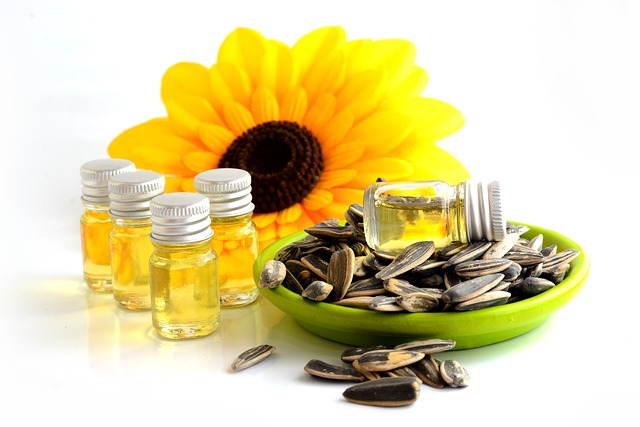


Symptoms of Deficiency: Vitamin E deficiency is relatively rare but can occur. Symptoms may include muscle weakness, coordination difficulties, vision problems, and immune system impairment. Severe Vitamin E deficiency is more common in people with certain medical conditions that affect fat absorption, such as certain types of liver disease or genetic disorders.
Top Five Sources of Vitamin E : Almonds: Almonds are among the richest sources of Vitamin E. A small handful of almonds can provide a significant portion of your daily Vitamin E needs. Sunflower Seeds: These seeds are another excellent source of Vitamin E and can be eaten as a snack or added to salads and dishes. Spinach: This leafy green vegetable contains Vitamin E along with other essential nutrients. Sunflower Oil: Cooking with sunflower oil can also contribute to your Vitamin E intake. Avocado: Avocado is a nutrient-dense fruit that contains Vitamin E, healthy fats, and fiber.
Keep in mind that a balanced diet that includes a variety of foods can help ensure you get an adequate intake of Vitamin E and other essential nutrients. If you have specific dietary concerns or health conditions, it’s advisable to seek guidance from a healthcare professional or registered dietitian. Additionally, please note that dietary recommendations and information may have evolved since my last update in September 2021, so it’s a good idea to consult current nutritional guidelines for the most up-to-date information.
Vitamin E is a fat-soluble vitamin that also acts as an antioxidant in the body. Antioxidants are molecules that help protect cells from oxidative damage caused by free radicals. Free radicals are unstable molecules with an unpaired electron, and they can damage cells, proteins, and DNA. This damage is associated with various chronic diseases and the aging process. Vitamin E, as an antioxidant, plays a crucial role in neutralizing free radicals. It does this by donating an electron to stabilize the free radical, preventing it from causing further damage. Vitamin E is particularly effective at protecting cell membranes, which are primarily composed of lipids (fats). By scavenging free radicals and reducing oxidative stress, vitamin E helps maintain the integrity of cell membranes.
The relationship between vitamin E and antioxidants lies in their collective effort to combat oxidative stress. Antioxidants work together in the body to provide a defense against free radicals. For example, vitamin C, another antioxidant, can regenerate vitamin E after it has donated an electron to a free radical, making vitamin E available for further antioxidant activity. In summary, vitamin E is both an antioxidant itself and an essential component of the body’s antioxidant defense system. It works alongside other antioxidants to help protect cells and tissues from oxidative damage, thereby promoting overall health and potentially reducing the risk of chronic diseases.
Free Radicals: Free radicals are highly reactive molecules or atoms that contain unpaired electrons. Because they have unpaired electrons, they are unstable and seek to steal electrons from other molecules to become stable. In the process, they can damage cells, proteins, and DNA, leading to various health problems and aging. Free radicals are naturally produced in the body as byproducts of metabolism and energy production. They can also be generated by external sources like exposure to pollution, radiation, cigarette smoke, and certain chemicals. Common types of free radicals include superoxide radicals, hydroxyl radicals, and reactive oxygen species (ROS).
Harmful Effects of Free Radicals: Free radicals can cause oxidative stress, a condition characterized by an imbalance between the production of free radicals and the body’s ability to neutralize them with antioxidants. When oxidative stress occurs, it can lead to: Cell Damage: Free radicals can attack and damage cellular structures, including lipids, proteins, and DNA. This can disrupt normal cellular functions and lead to mutations and cell death. Aging: The cumulative damage caused by free radicals is believed to contribute to the aging process, leading to wrinkles, reduced skin elasticity, and other signs of aging. Chronic Diseases: Oxidative stress is associated with a range of chronic diseases, including heart disease, cancer, diabetes, neurodegenerative disorders (e.g., Alzheimer’s and Parkinson’s disease), and inflammatory conditions.
Antioxidants: Antioxidants are molecules that can neutralize free radicals by donating electrons without becoming unstable themselves. They act as a defense system against oxidative stress and help protect cells and tissues from damage caused by free radicals. Common antioxidants include vitamins (e.g., vitamin C and vitamin E), minerals (e.g., selenium and zinc), and various phytochemicals found in fruits, vegetables, and other plant-based foods.
Protective Effects of Antioxidants: Antioxidants play a crucial role in maintaining health and preventing disease by: Neutralizing Free Radicals: Antioxidants can stabilize free radicals by donating electrons, preventing them from causing cellular damage. Reducing Oxidative Stress: By scavenging free radicals, antioxidants help reduce oxidative stress and lower the risk of chronic diseases associated with it. Anti-Aging: Antioxidants may slow down the aging process by protecting against the effects of oxidative stress on skin and cellular structures. Supporting Immune Function: A balanced intake of antioxidants supports immune function and helps the body defend against infections. To benefit from antioxidants, it’s important to consume a diet rich in fruits, vegetables, whole grains, and other foods that provide these protective compounds. Additionally, certain antioxidant supplements may be recommended in specific cases, but it’s generally best to obtain antioxidants through a varied and balanced diet.
The top 5 sources of antioxidants are foods that are rich in various antioxidants, vitamins, minerals, and phytochemicals. These foods help combat oxidative stress and protect cells from damage caused by free radicals. Here are some of the top sources: Berries: Berries such as blueberries, strawberries, raspberries, and blackberries are packed with antioxidants, including vitamin C, vitamin A, and various phytochemicals like flavonoids and anthocyanins. Nuts and Seeds: Nuts like almonds, walnuts, and seeds like flaxseeds and chia seeds are rich in antioxidants, vitamin E, and minerals like selenium. They also provide healthy fats that have anti-inflammatory properties. Dark Leafy Greens: Vegetables like spinach, kale, Swiss chard, and collard greens are high in antioxidants such as vitamin C, vitamin K, and various carotenoids like lutein and zeaxanthin. Colorful Vegetables: Vegetables like carrots, sweet potatoes, bell peppers, and tomatoes contain antioxidants like beta-carotene, vitamin C, and vitamin A. These vegetables are known for their vibrant colors, which often indicate a high antioxidant content. Herbs and Spices: Many herbs and spices are excellent sources of antioxidants. Examples include oregano, cinnamon, turmeric, and cloves. These seasonings not only add flavor but also provide health benefits. It’s important to consume a variety of antioxidant-rich foods as part of a balanced diet to ensure you get a broad spectrum of antioxidants and their associated health benefits. Additionally, foods like dark chocolate, green tea, and red wine also contain antioxidants and can be included in moderation as part of a healthy diet.
VITAMIN K – Fat Soluble (K)
Vitamin K is an essential nutrient that plays a crucial role in various physiological processes within the human body.
Why It’s Needed (i): Vitamin K is primarily needed for blood clotting. It helps in the formation of blood clots to prevent excessive bleeding when you get injured. It is also involved in maintaining bone health and may have potential roles in other bodily functions, such as regulating blood calcium levels and promoting cell growth.
Sources (ii): Vitamin K is found in several dietary sources. There are two main forms of Vitamin K: Vitamin K1 (phylloquinone), which is primarily found in plant-based foods, and Vitamin K2 (menaquinone), which is found in both animal and fermented foods. Green leafy vegetables (such as spinach, kale, and broccoli), Brussels sprouts, cabbage, asparagus, and certain vegetable oils (like soybean and canola oil), tomato, meat, coconut oil, soya beans, vegetables, animal liver, egg yolks, meat, cheese, and fermented foods (such as natto, a Japanese soybean dish, and certain cheeses).
Recommended Levels (iii): The recommended daily intake of Vitamin K can vary depending on age, gender, and life stage. For adults, the Adequate Intake (AI) levels are typically around 90-120 micrograms (mcg) per day for men and 90-110 mcg per day for women. However, specific recommendations may vary by country and organization, so it’s essential to consult local dietary guidelines.
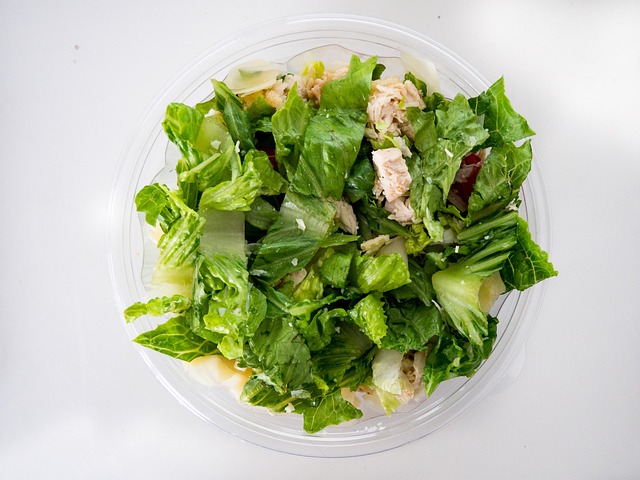


Symptoms of Deficiency (iv): Vitamin K deficiency is relatively rare but can lead to various health issues. Symptoms of Vitamin K deficiency may include: Easy bruising or bleeding, Gastrointestinal bleeding, Nosebleeds, Blood in urine or stool ,Weakened bones. Severe Vitamin K deficiency can be life-threatening because it impairs the blood’s ability to clot. It’s important to note that Vitamin K1 is primarily found in plant-based foods, while Vitamin K2 is found in both animal-based and fermented foods. Including a variety of these foods in your diet can help ensure an adequate intake of Vitamin K. Additionally, specific recommendations for daily Vitamin K intake may vary based on age, gender, and individual health needs, so it’s a good idea to consult with a healthcare professional or nutritionist for personalized guidance.
Vitamin K1 Sources: Green Leafy Vegetables: These are among the richest sources of Vitamin K1. Examples include kale, spinach, collard greens, Swiss chard, and broccoli. Brussels Sprouts: Brussels sprouts are a cruciferous vegetable that provides a significant amount of Vitamin K1. Cabbage: Both green and red cabbage are good sources of Vitamin K1. Asparagus: This vegetable contains a moderate amount of Vitamin K1. Green Beans: Green beans also contribute to Vitamin K1 intake. Certain Vegetable Oils: Some vegetable oils, such as soybean oil, canola oil, and olive oil, contain Vitamin K1.
Vitamin K2 Sources: Animal Liver: Liver from animals like beef, chicken, and pork is a rich source of Vitamin K2. Fermented Foods: Fermented foods contain Vitamin K2, particularly a form called menaquinone-7 (MK-7). Examples include: Natto: A Japanese dish made from fermented soybeans. Certain Cheeses: Hard cheeses like Gouda, Swiss, and cheddar can contain Vitamin K2. Fermented Dairy Products: Some yogurts and kefir products may contain Vitamin K2 due to the fermentation process. Egg Yolks: Egg yolks contain small amounts of Vitamin K2. Certain Meats: Certain types of meat, such as chicken and ground beef, can provide Vitamin K2. Fish: Some fatty fish like salmon, mackerel, and sardines contain Vitamin K2.
Top Five Sources (v): Some of the top sources of Vitamin K include: Kale: This leafy green vegetable is exceptionally rich in Vitamin K1, Spinach: Another green leafy vegetable that provides a significant amount of Vitamin K1, Broccoli: This cruciferous vegetable is a good source of Vitamin K1 , Natto: A Japanese dish made from fermented soybeans, it is one of the best sources of Vitamin K2, Meat and Cheese: These animal-based foods are sources of Vitamin K2.
Green leafy vegetables are excellent sources of Vitamin K, particularly Vitamin K1 (phylloquinone). Here are some examples of leafy greens that are rich in Vitamin K: Kale: Kale is one of the most nutrient-dense leafy greens and is exceptionally high in Vitamin K1. It’s also a good source of other vitamins and minerals. Spinach: Spinach is another Vitamin K-rich leafy green. It’s versatile and can be used in salads, smoothies, or cooked dishes. Swiss Chard: Swiss chard, with its colorful stems and dark green leaves, is a nutritious source of Vitamin K1. Collard Greens: Collard greens are often used in Southern cuisine and are a valuable source of Vitamin K1. Broccoli Rabe (Rapini): This leafy green vegetable is related to broccoli and has a slightly bitter taste. It’s packed with Vitamin K1 and other nutrients. Arugula: Arugula is a peppery-tasting green that is commonly used in salads. It’s also a good source of Vitamin K1. Romaine Lettuce: Romaine lettuce is a popular choice for salads and sandwiches and contains Vitamin K1. Turnip Greens: Turnip greens, the leaves of the turnip plant, are rich in Vitamin K1 and can be cooked or used in salads. Cabbage: While not as high in Vitamin K as some other greens, cabbage is still a source of this vitamin and is used in various culinary dishes. Bok Choy: Bok choy, a staple in Asian cuisine, is a source of Vitamin K1 and adds a unique flavor to stir-fries and soups.
Incorporating a variety of these green leafy vegetables into your diet can help ensure an adequate intake of Vitamin K1, which is essential for blood clotting and bone health. Remember that the specific Vitamin K content may vary depending on factors like the freshness and growing conditions of the vegetables. In short, it is necessary for blood clotting and bone health. Body can bleed excessively if it does not have mechanism in place to control it. It helps in effective clotting else people could find issues like nosebleeds or internal hemorrhaging. It’s important to maintain a balanced diet that includes a variety of these sources to ensure an adequate intake of Vitamin K. If you have specific dietary concerns or medical conditions, it’s a good idea to consult with a healthcare professional or nutritionist for personalized guidance.
While no single vegetable contains all the vitamins A, D, K, B, C, and E in high amounts, some vegetables are nutrient-dense and provide a wide range of vitamins. One such vegetable is spinach. Spinach is rich in various vitamins and minerals, making it a valuable addition to a balanced diet. Here’s how spinach stacks up in terms of these vitamins: Vitamin A: Spinach contains a significant amount of beta-carotene, which the body can convert into Vitamin A. Vitamin A is essential for vision, immune function, and skin health. Vitamin D: Vitamin D is primarily obtained from sunlight exposure and is found in limited amounts in food. Vegetables like spinach are not a significant source of Vitamin D. Vitamin K: Spinach is an excellent source of Vitamin K, particularly Vitamin K1 (phylloquinone), which is essential for blood clotting and bone health. Vitamin B: Spinach contains various B vitamins, including folate (Vitamin B9), which is important for cell division and the prevention of birth defects. Vitamin C: Spinach contains Vitamin C, although it’s not as high as in some other vegetables like bell peppers and citrus fruits. Vitamin C is crucial for immune function and skin health. Vitamin E: Spinach contains small amounts of Vitamin E, an antioxidant that helps protect cells from damage. While spinach is a nutritious vegetable, it’s essential to have a well-rounded diet that includes a variety of foods to ensure you get all the essential vitamins and minerals your body needs. Different vegetables, fruits, nuts, seeds, and other foods contribute to a balanced intake of nutrients.
VITAMINS – Water Soluble (B, C)
Water-Soluble Vitamins: These vitamins are soluble in water and are not stored in the body to a significant extent. They need to be consumed regularly through diet because excess amounts are excreted in urine. The water-soluble vitamins include:
VITAMINS – Water Soluble (B)
B Vitamins: This group includes several vitamins, such as B1 (thiamine), B2 (riboflavin), B3 (niacin), B5 (pantothenic acid), B6 (pyridoxine), B7 (biotin), B9 (folate or folic acid), and B12 (cobalamin). These vitamins play various roles in energy metabolism, red blood cell formation, and nervous system function. Vitamin B helps our body to make protein and energy.
Sources of Vitamin B: Pulses, Maize, Peas, Mutton, Milk, Beans and Potato
Vitamin B1 – It converts carbohydrates into glucose to produce energy in the body. It means healthy or right muscles and right nervous system. Also aids in right skin, hair, eyes, mouth and liver.
Sources of Vitamin B1: Maize, Pulses, Meat, Potato, Beans, Milk, Peas
Vitamin B2 – It is needed to use oxygen. It removes fatigue of the eyes and helps in keeping skin, hair and nails healthy.
Sources of Vitamin B2: Chicken, Vegetables, Meat, Butter, Egg, Butter, Beans and Egg.
Vitamin B3 – Helps you get rid of your toxins and other harmful chemicals in your body. It helps in making stress related hormones. It helps in keeping cholesterol out for causing any troubles in your body.
Sources of Vitamin B3: Peanuts, Tomato, Maize, Wholegrain Cereals, Potato, Meat and Green Vegetables.
Vitamin B6 – Enzymes are needed to help in all sorts of chemical reactions in the body. The chemistry of the body is written in B6. There are over 100 enzymatic reactions taking place in our body.
Sources of Vitamin B6: Maize, Pulses, Wholegrain Cereals, Peas, Meat, Milk, Nuts, Fish.
Vitamin B12 – Red Blood Cells need to be kept healthy and synthesized, nervous system needs maintenance. It is needed to keep anemia out from your body.
Sources of Vitamin B12: Egg, Milk, Meat, Butter.
Tingling sensations, also known as paresthesia, can occur for various reasons and in different parts of the body. Some common causes of tingling sensations include: Pressure or Nerve Compression: Sitting or lying in a certain position for an extended period can put pressure on nerves, leading to tingling sensations. For example, when your foot “falls asleep” after sitting cross-legged for a while. Poor Blood Circulation: Reduced blood flow to a particular area can cause tingling sensations. This can happen when you sit or stand in one position for too long or due to certain medical conditions. Pinched Nerves: Nerves can get pinched or compressed due to conditions like herniated discs in the spine or carpal tunnel syndrome in the wrist. Injury or Trauma: Physical injury or trauma to a nerve can lead to tingling sensations in the affected area. Vitamin Deficiency: Some vitamin deficiencies, particularly vitamin B12 deficiency, can cause paresthesia. Neurological Conditions: Certain neurological conditions like multiple sclerosis, peripheral neuropathy, or stroke can lead to tingling sensations. Anxiety or Stress: Stress and anxiety can sometimes manifest physically, leading to sensations like tingling or numbness. Medications: Some medications, such as those used in chemotherapy or to treat HIV, can cause peripheral neuropathy and tingling sensations as a side effect. Infections or Diseases: Certain infections or diseases, such as shingles or diabetes, can result in nerve damage and tingling.
Vitamin B12 deficiency can cause tingling sensations, and this condition is known as peripheral neuropathy. Here’s why: Vitamin B12, also known as cobalamin, plays a crucial role in the proper functioning of the nervous system. It is involved in the production of myelin, a fatty substance that surrounds and protects nerve fibers. Myelin helps nerve signals travel efficiently along the nerves. When there is a deficiency of Vitamin B12, the myelin sheath can become damaged or impaired. As a result, nerve signals may not be transmitted effectively, leading to abnormal sensations like tingling, numbness, or even weakness. These symptoms typically start in the extremities, such as the hands and feet, and may progress to other parts of the body. The tingling sensations associated with Vitamin B12 deficiency are often described as “pins and needles.” In severe cases, this condition can lead to more serious neurological symptoms, including difficulty walking, balance problems, and cognitive issues.
Vitamin B12 deficiency can occur for various reasons, including: Dietary Insufficiency: A lack of Vitamin B12 in the diet is a common cause, especially among vegetarians and vegans, as B12 is primarily found in animal products. Malabsorption: Some medical conditions, such as pernicious anemia, celiac disease, or Crohn’s disease, can interfere with the absorption of Vitamin B12 in the digestive tract. Medications: Certain medications, like proton pump inhibitors and metformin, can affect Vitamin B12 absorption. Aging: As people age, their ability to absorb Vitamin B12 from food sources may decrease. Surgery: Some weight loss surgeries, such as gastric bypass, can reduce the body’s ability to absorb Vitamin B12.
Treatment for Vitamin B12 deficiency typically involves dietary changes, B12 supplements, or injections, depending on the underlying cause and severity of the deficiency. It’s essential to address this deficiency promptly to prevent further nerve damage and alleviate symptoms like tingling sensations. If you suspect you have a Vitamin B12 deficiency, consult a healthcare professional for evaluation and guidance.
VITAMINS – Water Soluble (C)
Vitamin C (Ascorbic Acid): Important for collagen production, immune function, and antioxidant activity. Vitamin C helps our body heal if it gets a cut.
Sources of Vitamin C: Orange, Lime, Grapes, Cucumber, Guava, Cabbage, Spinach, Tomato
Lemons are a citrus fruit known for their refreshing flavor and numerous health benefits. They are a rich source of Vitamin C and contain various antioxidants, fiber, and other essential nutrients. Here’s how lemons can benefit your health and how to consume them:
Health Benefits of Lemons: Rich in Vitamin C: Lemons are one of the best sources of Vitamin C, which is essential for a healthy immune system. It helps the body fight off infections and supports wound healing. Antioxidant Properties: Lemons contain antioxidants like flavonoids and carotenoids that help protect cells from damage caused by free radicals. This can lower the risk of chronic diseases. Aid in Digestion: Lemon juice, particularly when consumed in warm water, can stimulate digestion and help relieve indigestion and bloating. Alkalizing Effect: Despite being acidic in nature, lemons have an alkalizing effect on the body. Maintaining a slightly alkaline pH in the body is believed to be beneficial for overall health. Weight Management: The pectin fiber in lemons may help with weight loss by promoting a feeling of fullness and reducing calorie intake. Skin Health: Vitamin C in lemons is important for collagen production, which is essential for healthy skin. Lemon water is sometimes used as a natural remedy for improving skin complexion. Detoxification: Lemon water is often considered a detoxifying drink. It is believed to support the liver and kidneys in removing toxins from the body.
How to Consume Lemons: There are several ways to consume lemons to benefit from their health properties: Lemon Water: Squeeze the juice of half a lemon into a glass of warm or room-temperature water. This can be consumed in the morning to kickstart your metabolism and aid digestion. Lemonade: Prepare homemade lemonade using fresh lemon juice, water, and a natural sweetener like honey or stevia. Lemon Zest: The zest (grated peel) of lemons can be added to various dishes, desserts, and salads to enhance flavor. Lemon in Cooking: Lemons are used as a flavor enhancer in many recipes, from savory dishes to desserts. Lemon Tea: Add lemon juice to your favorite herbal or green tea for added flavor and health benefits. Lemon Dressing: Create a simple salad dressing using lemon juice, olive oil, and herbs. Lemon Snacks: Make lemon-flavored snacks or treats like lemon bars or lemon-infused nuts.
How Lemons Work on the Body: Lemons work on the body in several ways: Vitamin C supports the immune system and helps the body combat infections. Antioxidants in lemons protect cells from oxidative stress and damage. Lemon water may aid digestion and alleviate digestive discomfort. The alkalizing effect of lemons may help balance the body’s pH levels. Pectin fiber promotes a sense of fullness, potentially aiding in weight management. The hydration provided by lemon water is essential for overall health.
It’s important to note that while lemons offer health benefits, consuming them in moderation as part of a balanced diet is key. Lemon juice can be acidic and may affect dental enamel, so it’s advisable to rinse your mouth with plain water after consuming lemon water. If you have specific health concerns or conditions, consult with a healthcare professional before making significant dietary changes.
PROTEINS
Proteins – These are long chains of amino acids of 22 kinds that our body need to function properly. Milk, Peas, Egg, Fish, Peanuts, Nuts, Wholegrain Cereals.


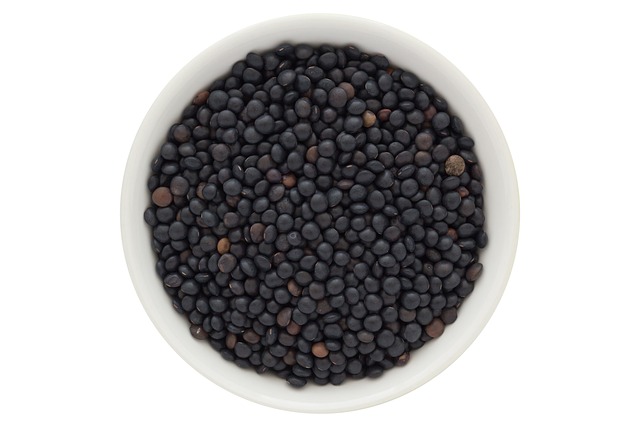
CARBOHYDRATES
MINERALS
Minerals
Calcium – Need to keep bones strong and healthy. Also helps in cardiovascular health, muscle maintenance, circulatory health and blood clotting. It acts as an enzyme activator too. Milk, Egg, Fish, Pomegranate, Turnip, Kholrabbies, Okra.
Phosphorous – Needed to be in bones too. It also helps in various biochemical reactions in the body. Fish, Milk, Nuts Egg and Peanuts.
Iron – Need to help RBC to deliver oxygen to the rest of the body. Nuts, Chicken, FIsh, Wholegrain Cereals, Egg,
Brinjal, also known as eggplant or aubergine, is a versatile and nutritious vegetable with several health benefits. Here are some reasons why brinjal is good for you as a food: Rich in Nutrients: Brinjals are a good source of essential nutrients, including dietary fiber, vitamins, and minerals. They provide vitamins like Vitamin K, Vitamin C, Vitamin B6, and folate, as well as minerals like potassium, manganese, and magnesium. Low in Calories: Brinjals are low in calories, making them a great choice for those looking to manage their weight. They can be included in a calorie-conscious diet.
Dietary Fiber: Brinjals are high in dietary fiber, which is beneficial for digestive health. Fiber helps prevent constipation, supports a healthy gut, and may lower the risk of certain digestive disorders. Antioxidant Properties: Brinjals contain antioxidants like anthocyanins and nasunin, which help protect cells from damage caused by free radicals. Antioxidants are known to have various health benefits, including reducing the risk of chronic diseases. Heart Health: The fiber, potassium, and antioxidants in brinjals can contribute to heart health. Potassium helps regulate blood pressure, while fiber may lower cholesterol levels. Weight Management: Due to their low calorie and high fiber content, brinjals can help with weight management by promoting a feeling of fullness and reducing overall calorie intake. Blood Sugar Control: Some studies suggest that compounds in brinjals may have a positive effect on blood sugar levels, making them potentially beneficial for individuals with diabetes. Versatility: Brinjals can be prepared in various ways, including roasting, grilling, sautéing, or baking. They are a versatile ingredient in many cuisines worldwide. Aid in Digestion: The dietary fiber in brinjals can aid in digestion by promoting regular bowel movements and preventing digestive discomfort. Bone Health: Brinjals contain Vitamin K, which is essential for bone health and may help improve calcium absorption.
It’s important to note that while brinjals offer many health benefits, individual dietary preferences and sensitivities vary. Including a variety of vegetables in your diet is essential to ensure you get a wide range of nutrients. Additionally, how you cook and prepare brinjals can affect their nutritional content, so consider healthier cooking methods like roasting or grilling instead of deep frying.
FATS AND OILS
Fats and oils – They are important in limited quantity to protect our organs and keep them warm and help them in absorption of nutrients around. It also helps in hormone production. Milk, Butter, Coconut, Nuts. Peanuts, Ghee
Olive oil is a popular cooking oil that is derived from olives, the fruit of the olive tree (Olea europaea). It is well-known for its potential health benefits, although it’s important to note that it is not a significant source of Vitamin K. Here are some of the potential benefits of olive oil: Heart Health: Olive oil is rich in monounsaturated fats, particularly oleic acid, which is considered heart-healthy. Regular consumption of olive oil as part of a Mediterranean diet has been associated with a reduced risk of heart disease. Antioxidant Properties: Olive oil contains compounds like polyphenols and vitamin E, which have antioxidant properties. Antioxidants help protect cells from oxidative damage caused by free radicals. Anti-Inflammatory Effects: Some studies suggest that the anti-inflammatory properties of olive oil may help reduce inflammation in the body, which is linked to various chronic diseases. Improved Cholesterol Profile: Olive oil may help improve the balance of “good” (HDL) and “bad” (LDL) cholesterol in the blood, potentially reducing the risk of atherosclerosis and heart disease. Weight Management: Consuming olive oil in moderation as part of a balanced diet may support weight management and satiety due to its healthy fats. Skin Health: Olive oil is sometimes used topically for skin care due to its moisturizing and antioxidant properties.
While olive oil provides several health benefits, it is not a significant source of Vitamin K1 or K2. If you’re looking to increase your Vitamin K intake, you should primarily focus on foods like green leafy vegetables (rich in Vitamin K1) and fermented foods, certain meats, and dairy products (sources of Vitamin K2). Always choose high-quality, extra virgin olive oil for maximum health benefits, as it retains more of its natural compounds and flavor. It’s also essential to consume it in moderation as part of a balanced diet.
Castor Oil : Castor oil, derived from the seeds of the castor bean plant known as Ricinus communis, is a vegetable oil produced through pressing. This plant is native to African and Asian regions and has leaves that bear a resemblance to the palm of Christ, hence its colloquial name, ‘Palma Christe.’ In Tamil, it is referred to as ‘vilaakenni,’ in Hindi as ‘Arandi tel,’ and in Telugu as ‘Amudamu.’ This nonvolatile fatty oil belongs to the Euphorbiaceae family, known for its unique properties and applications. Castor oil is highly regarded in Ayurvedic medicine, often referred to as a versatile remedy for various health concerns like alopecia, wrinkles, ovarian cysts, constipation, piles, asthma, and arthritis, among others. In Ayurveda, it is known as Gandharvahasta or Eranda taila. Castor oil contains a rich array of natural compounds that offer a wide range of therapeutic benefits, making it a valuable resource in both Chinese and Ayurvedic medicinal practices.
Sources: 1 ,



